Research Through Making V
exhibition: Pneusystems research and prototype development
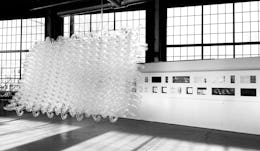
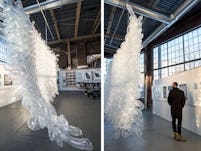
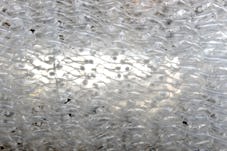
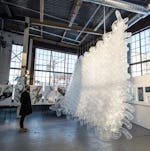
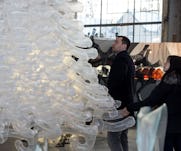
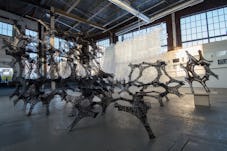
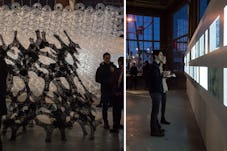
PneuSystems is a prototype-based exploration of the performative, formal and aesthetic potentials for cellular pneumatic membrane-based aggregate systems towards deep, lightweight architectural skins imbued with intelligence and environmental response. This body of exploratory research is situated within the history and technology of pneumatic structures, the application of biological paradigms towards architectural innovation and the development of novel performative geometries. The research methodology deploys feedback between physical prototypes and computational models to develop geometries and systems for cellular pneumatic aggregation and kinetic actuation for future architectural applications.
Adaptation has been frequently identified as a characteristic fundamental to the pursuit of sustainable design. In this program of research, adaptation is addressed via the exploration of “responsive envelopes,” conceived of as thick, sensing, kinetic membranes that, like biotic skins, must perform multiple and sometimes conflicting functions in order to manage building energy and climate. Inflatable cushion façade systems comprised of ETFE foil have been in use for buildings since the 1980’s and present an exciting alternative to glazing with a lightweight, environmentally stable and recyclable material which has similar light transmission qualities to glass. The current state of technology for application of these systems is dominated by framed stretched films and inflatable cushions.
The research of PneuSystems is predicated upon the hypothesis that there is significant formal and performative innovation that can be advanced by exploring the possibilities of three-dimensional cellular aggregation of nested pneu cushions with integrated kinetic capabilities for responsive performance. Such systems might combine the insulating advantages of cushion-based envelopes while eliminating the thermal bridging mullions of framed systems. Adaptive envelope performance may be achieved through variable pressure delivery, which could vary overall thermal insulation through selective inflation and deflation of the cells in response to exterior temperature. Air pressure can also be used to operate soft components, further eliminating additional mechanical components that are typical of contemporary kinetic façade systems (and their associated material and energy use), and contributing to low-energy, lightweight responsive envelope systems for the next generation of sustainable and responsive buildings.
The research process entails a bottom-up method of experimentation advanced through iterative feedback between several interdependent streams of work. The team began by studying principles derived from biological models, which inform the construction of physical models at an architectural scale. Two primary areas of research are advanced: novel aggregation geometries for nested and interwoven envelope structures and a vocabulary of geometries for kinetic motion. These will form the building blocks for more sophisticated composite models that will be integrated within the aggregate arrays to achieve specific changes either within the field of the system (such as an aperture for air venting) or as an actuator within the system.
The research process entails the development of combinatory approaches for computational simulation and thermal modeling of irregular pneu forms. Iterative development of physical prototypes is used as feedback to inform computational definitions and workflow so that more accurate predictive simulations can be advanced. The process also requires the development of custom rapid physical prototyping techniques, and real-time digital pneumatic control systems.
The primary outcomes of this exploratory body of research have been the generation of a vocabulary of kinetic and self binding nested geometries, evaluation of performance characteristics, development of computational workflows for simulation and design, and development of prototyping techniques through which designers and engineers can explore the potentials of cellular pneumatics toward new models for lightweight responsive architectures.
In favoring flexibility over firmness this architecture challenges traditional architectural values. It advocates for an architecture whose main virtue lies not in Vitruvian “firmitas“ but in its ability to be in-firm; to not resist change, but to embrace change as its ally.
| Typology | Pneus Systems |
| date | 2014 |
| location | University of Michigan |
| scale | 200 sf full-scale prototypes |
| scope | Design and prototyping of a kinetic, sensing, environment-responsive envelope system. Research includes lightweight deformable structures, cellular aggregation geometries, environmental sensing and responsiveness, pneumatic actuation, material research and fabrication logics. |
Team
| Role | Kathy Velikov Co-Lead PI with Geoffrey Thün. Team/Collaborators: Mary O’Malley [project coordinator], Eric Meyer, Nick Safley, Christina Kull, Dan McTavish, Wiltrud Simbuerger, John Hilmes, Michael Sanderson, Yunzhi Ou [design and prototyping assistants]Dr. Lars Junghans [thermal modeling], Dr. Jerome Lynch [sensing networks], Dr. Satinder Singh Baveja [machine learning] CCA 333 Summer Studio 2013, with Benjamin Rice (Nervous Ether installation) |
AWARDS | GRANTS
- Tex-FAB PLASTICITY Competition, 2013: Honorable Mention